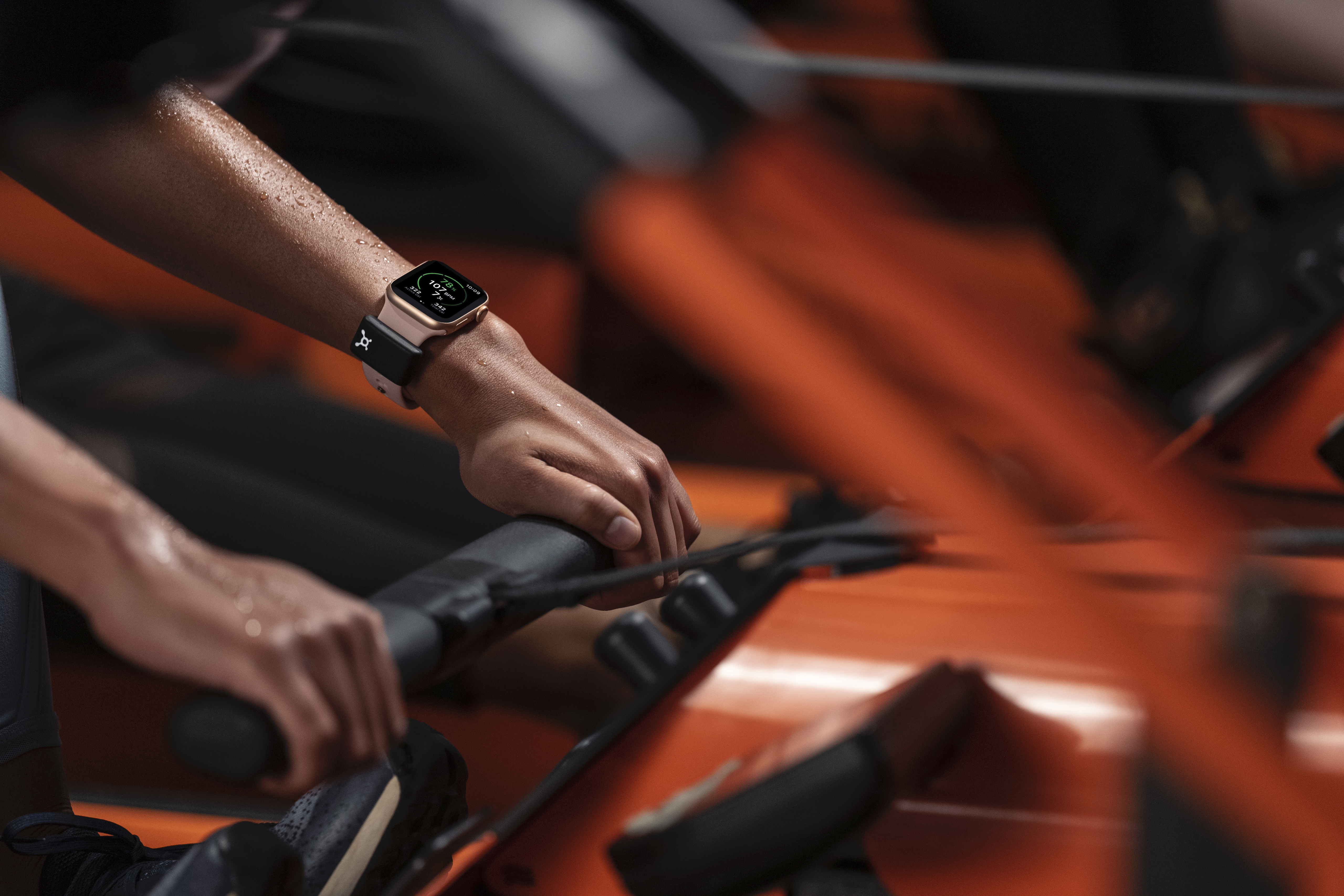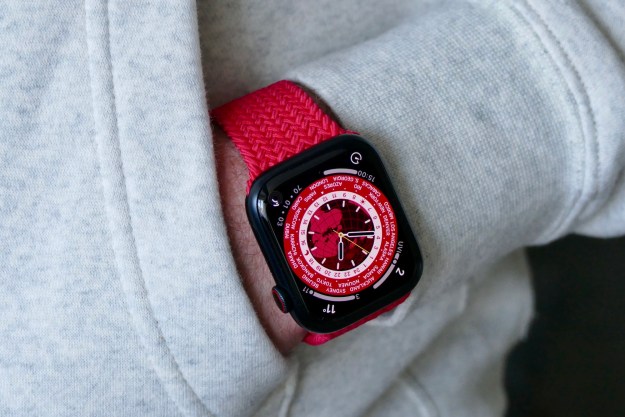Just in time for fitness-related New Year’s resolutions, you’ll soon be able to incorporate your Apple Watch into your Orangetheory interval training workout with a new partnership between the tech giant and the fitness franchise.
The gym that has a cult-like following thanks to its trainer-led, high-intensity workouts announced on Thursday a new custom-made device called OTbeat Link. The small device is worn on the Apple Watch band and would be able to track heart rate data needed for an Orangetheory workout while still counting your workout toward your watch’s daily Activity Rings.

According to the press release, a common request from Orangetheory members was to have the ability to sync their Apple Watch with the Orangetheory heart rate system.
“Member experience has been at the forefront of all that we do since the brand’s inception,” Orangetheory co-founder and CEO Dave Long said in the press release. “We’re addressing the needs of our members by providing an integration between the workout they do and the technology they use, leading to a seamless fitness experience and healthier life.”
Those who work out at the high-intensity interval training gym must either rent or purchase a heart rate monitor before taking a class. The monitor tracks your heart rate zones throughout the workout, with the goal of getting into the “orange zone.” The partnership with Apple will allow people with an Apple Watch to exercise without the use of one of Orangetheory’s heart rate monitors that either goes across your chest or wraps around your upper arm.
You’ll have to purchase the OTBeat Link for $129 if you want to use your Apple Watch during your workout. The device will be available to all 1,300 Orangetheory studios starting early next year.
A new Orangetheory app will also accompany the OTbeat Link. The app will show you what “color zone” you’re in during your workout, as well as provide you with post-workout reports.
Orangetheory told CNET that there aren’t plans to incorporate other smartwatches or fitness devices, such as those offered by Fitbit.
The Apple Watch has already been integrated into other popular fitness brands such as Peloton, the Mirror, and more.
Dueling fitness trackers
Apple Watch has solidified a position for itself as a premiere fitness tracker, and a dominant player in the wearables market. That said, it could soon have some competition: Google bought Fitbit for $2.1 billion in November. The search giant has largely failed in making a ubiquitous wearable on the level of the Apple Watch, but the Fitbit acquisition could give it an advantage. Now it just needs the right partners.
Orangetheory’s partnership with Apple is a sign that it’s not going to just be hardware that determines the winner of the wearable wars — companies will need to partner with major fitness brands if they want to put out a must-have device. If Google puts out an official CrossFit or Bikram Yoga fitness tracker, there’s suddenly a built-in audience for the product. Apple’s tapped into one of the most trendy fitness programs in the country, it only makes sense its competitors could do something similar.
Editors' Recommendations
- How Intel and Microsoft are teaming up to take on Apple
- Watch all of Apple’s Wonderlust videos right here
- Hermès removes all leather Apple Watch bands from its site
- Apple just gave you a reason to ditch your Mac for an iPad
- Apple Watch’s exciting feature road map is stacked




